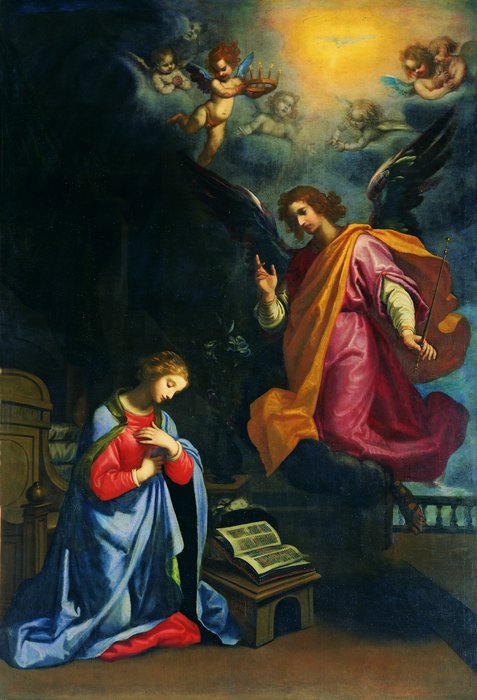Information about the artwork
- Artist/maker
- Giovanni Bilivert
- Title
- Annunciation
- Date
- 1630
- Materials and Techniques
- Oil on canvas
- Dimensions
330 x 225 cm
- Location
-
Palazzo Pretorio Museum
Second Floor
Our site saves small pieces of text information (cookies) on your device in order to deliver better content and for statistical purposes. You can disable the usage of cookies by changing the settings of your browser. By browsing our website without changing the browser settings you grant us permission to store that information on your device. I agree
330 x 225 cm

Signed and dated by the famous painter Giovanni Bilivert, the refined but simple altarpiece shows the quiet, luminous figures of the Virgin Mary and the Archangel Gabriel in a diagonal arrangement, standing out from a dark, deep background. This painting is one of the most important 17th-century artworks on display in the section on The Great Altarpieces, showing the pictorial style of the Florentine workshop of Matteo Rosselli.
In 1624 the Ceppo Nuovo charity organisation commissioned Giovanni Bilivert, the favourite pupil of Ludovico Cardi called the Cigoli, an Annunciation for the church of San Francesco in Prato. The payments from 1628 indicate the beginning of the works, which were completed two years later, as confirmed by the date and signature inscribed by the painter on the kneeling stool.
In this simple, balanced work, which has however a certain aristocratic refinement, we are struck by the devoted everyday simplicity of the figures. The influence of Cigoli and references to Rosselli and Francesco Furini can be seen in the complex composition, which presents scenographic effects in the background with the openings onto the outside landscape; also in the luminous background of the sky, which however lacks any theatricality or tension. The dark, deep background from which the furnishing of the room and the fine vase of lilies dimly emerge, accentuates the figures, which are arranged on the diagonal of the painting and wrapped in luminous, flowingly voluminous robes.
The composed, humble pose of the Virgin, resembling an adoration of the Child, is particularly fine.
The Uffizi Prints and Drawings Cabinet preserves a preparatory drawing for this painting, which at that time had a great approval as Bilivert’s pupil and biographer Orazio Fidani testifies. The altarpiece was so appreciated that Bilivert in 1633 painted a replica of this subject for Saint Cross in Bastia, a church in Corsica.